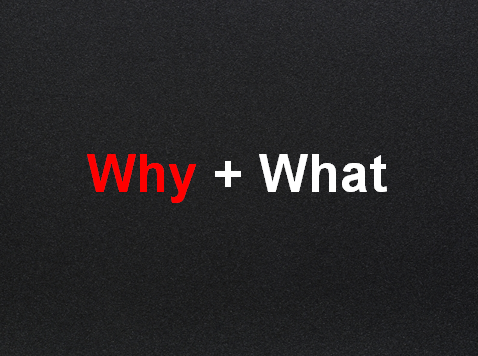The Proper Elevator Speech Formula: Why + What
This is an excerpt from The Media Training Bible, available in soft cover, for Kindle, and iPad.
In the last lesson, you learned to begin most of your answers with the lead. But there’s one time you should use a slightly less direct lead: when you’re asked a broad question about your work, such as, “Can you tell me about your company?”
Ninety-nine times out of a hundred, spokespersons answer that type of open-ended question with a direct lead by saying something like:
“Well, the Association for the Advancement of Arkansas Education is a 501(c)3 nonprofit organization with 25 employees working in four statewide offices to improve elementary and secondary education in Arkansas.”
OR
“Smith Toys is one of the leading companies in the United States making high-quality children’s toys in an affordable and sustainable manner.”

I’m guessing neither of those statements grabbed you. They’re not bad, since both conveyed real information, but they’re rather bland and uninspiring.
Worse, neither statement is particularly original. It’s easy to imagine that dozens of American companies manufacturing environmentally friendly toys could have answered the question in exactly the same way.
Those responses failed to get your attention because they answered a “what” question with a “what” answer.
Imagine if the spokespersons had answered the questions a little differently, beginning with some context that explained why their work mattered. Their answers might have sounded more like these:
“Here in Arkansas, we rank 50th in the United States in high school graduation rates. That means our students are among the least prepared in the nation when entering the workforce and the most likely to live in poverty for the rest of their lives. The Association for the Advancement of Arkansas Education is dedicated to changing that and to making sure our students get the high-quality education they need to successfully compete in the global marketplace.”
OR
“You know how children’s toys always seem to cost too much and break within weeks of opening the box? Well, Smith Toys makes toys that are going to work for years after you open the package — we guarantee it — and we’ve even figured out a way to make high-quality toys that are both affordable and environmentally friendly.”
I’m guessing those versions grabbed your attention more than the first ones. That’s because both spokespersons formatted their responses as a “why + what” instead of just a “what.”
You can use the “why + what” format every time you’re asked an open-ended question such as:
- What does your company do?
- What is your organization’s focus?
- Can you tell me about your product?
By themselves, “whats” just don’t work very well. Most people don’t care if you’re a 501(c)3 charity, how many offices you have in the state, or whether you’re a “leading” toy company. Those “whats” aren’t going to initiate a rush of support to your brand.
So when you’re asked an open-ended question, don’t just tell them what your company does. Tell them why it matters.
This is an excerpt from The Media Training Bible: 101 Things You Absolutely, Positively Need to Know Before Your Next Interview, available in paperback, for Kindle, and iPad.



Great examples Brad. They really got the point across about the power of telling a “why” story. (After all, as Simon Sinek said in his TED talk, “Start with why.”)
I was especially interested in one difference between the “Here in Arkansas” and “You know how” examples: The former contains 3 sentences, but the latter has only 2, which made it seem less complete. So you might be interested in this table, which sets out a 3-part formula for an elevator pitch (with an example).
(By the way, I was brought here by a tweet from @PodiumWisdom, so s/he’s giving you some good PR!)
Craig —
Thank you for your comment. I’m delighted that you discovered the blog, and that I discovered yours! The advice you’re advocating is solid.
According to one study (specifically about the length of sound bites in news stories during a political race), the average media sound bite is just 7.3 seconds. Therefore, the challenge I always face when leading a media training is how to help someone articulate something of meaning in, say, 10 seconds or less. I try to balance brevity with meaning, and hope I don’t sacrifice one to achieve the other.
That’s just some context about how I use these types of statements. With that said, do you have any ideas about how you might rewrite the second example? I’m always open to ideas, and based on the system you developed, I can see how it could be used effectively here.
Thanks again for your comment. I look forward to remaining in touch with you!
Best,
Brad
Appreciate it Craig 🙂 When one encounters wise advice, passing it on is a great form of appreciation!
I did not notice the difference between the two examples – your power of reading is keen! Indeed the first example seems more complete, I agree. It actually bolsters the why (Arkansas 50th in high school graduation rates) with a “what that means (for our students)”. Tho the second example does have a more concrete and visual why than a simple statistic.
In the table in your original post, the formula lays out not just the “why” (problem) and the “what” (solution), but also what exactly the solution means (benefit in your table).
Therefore: is the lesson here to always spell out what both problems and solutions mean for your audience, in the most concrete way possible?
Cheers!
P.S. I’m a he – sadly, as the girlfriend is about to toss my laptop out the window.
Podium Wisdom —
Thanks for sending Craig here and for sharing my work! I’m glad we’re connected both here and on Twitter.
Best,
Brad